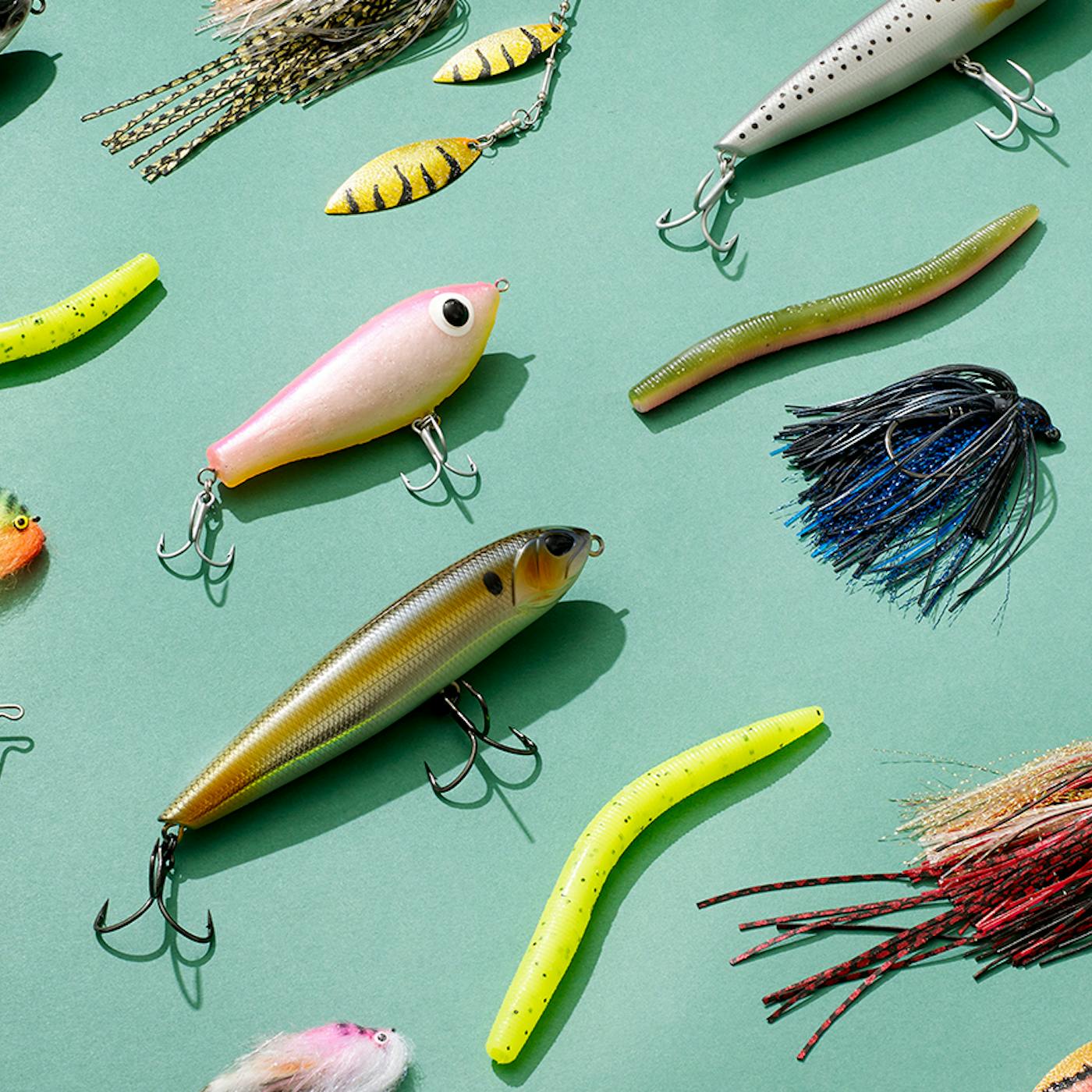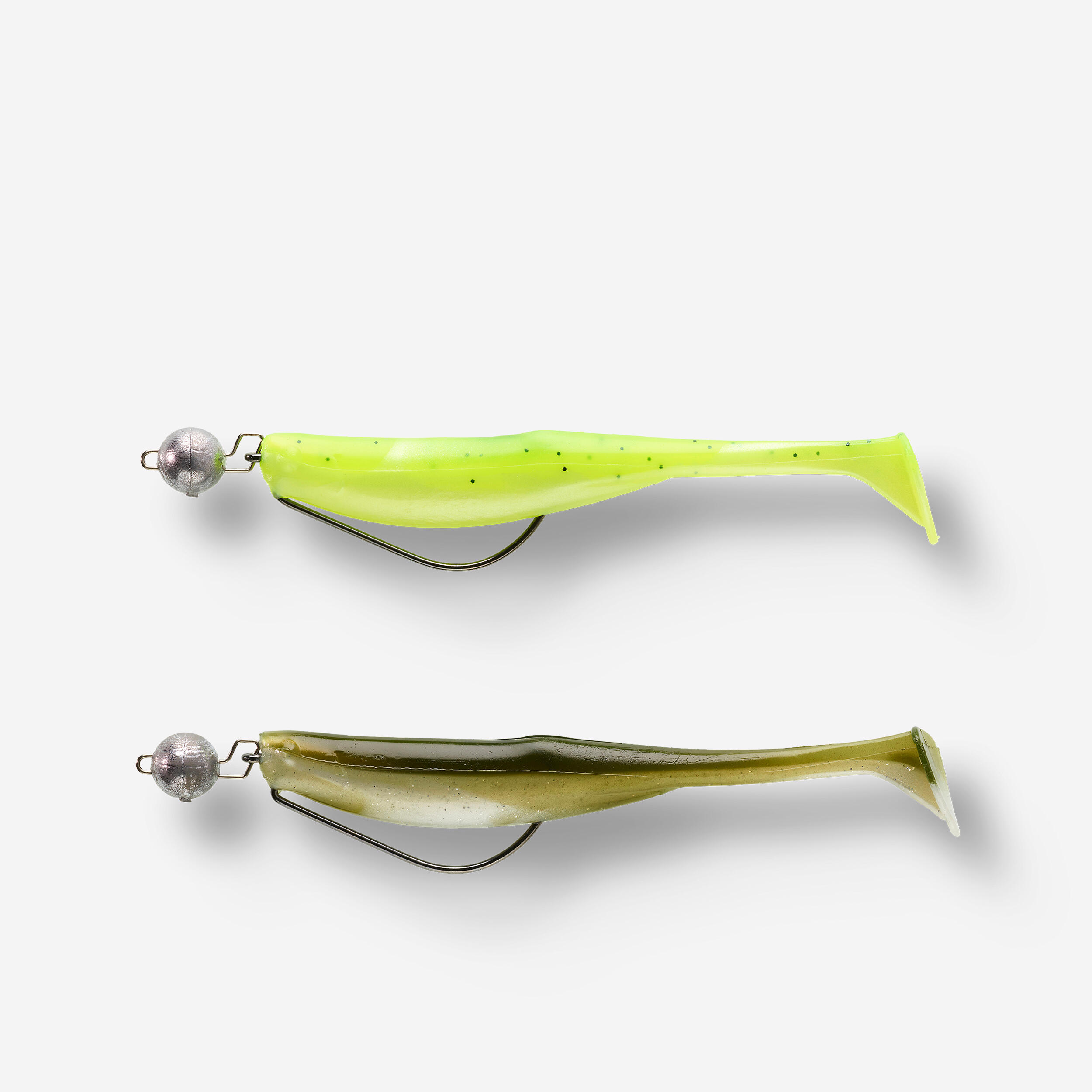Improving Your Skills With Fishing Lures in Different Waters
Wiki Article
Discovering the Effect of Weather Condition on Choosing the Right Fishing Lures
The partnership between climate conditions and Fishing attraction selection is a nuanced topic. Factors such as temperature level, moisture, wind rate, and cloud cover play important roles in influencing fish habits. For instance, warmer temperatures might call for faster attractions, while cooler ones require slower choices. Comprehending these characteristics can lead to even more successful fishing expedition. The genuine inquiry continues to be: how do these aspects communicate to form the fisherman's method?The Duty of Temperature in Lures Choice
When taking into consideration the selection of Fishing appeals, temperature plays a vital function in determining fish actions and choices. As water temperatures enhance, fish tend to become extra active, making them most likely to pursue faster-moving lures such as topwater plugs or jerkbaits. Conversely, in cooler temperature levels, fish may end up being tired, requiring anglers to decide for slower presentations, like jigs or soft plastics, that mimic an even more subtle and natural movement.Thermal stratification can likewise affect fish location. In warmer problems, fish might seek cooler, deeper waters, requiring appeals that can get to those depths. On the other hand, during cooler months, fish will certainly usually populate shallower locations, where lighter appeals can be extra efficient. Recognizing the effect of temperature on fish behavior enables fishermens to make enlightened selections regarding attraction types, colors, and retrieval speeds, maximizing their possibilities of success on the water.
How Moisture Influences Fish Actions
Humidity plays a significant duty in affecting fish actions, frequently impacting their feeding patterns and task levels. When moisture levels are high, fish have a tendency to be much more energetic and may venture right into shallower waters, making them a lot more available to anglers. This rise in task is often linked to higher oxygen degrees in the water, which improves fish metabolic process. On the other hand, low moisture can cause minimized fish task, as they may seek deeper waters where conditions are extra secure.Additionally, moisture can affect the sorts of lures that are effective - Fishing Lures. In high moisture, fish may react much better to attractions that resemble the motions of victim, while in low moisture, more subtle presentations may be required. Overall, comprehending the relationship between moisture and fish behavior can substantially enhance a fishermen's success by assisting in the option of appropriate attractions and Fishing strategies tailored to current conditions
Wind Speed and Its Impact on Fishing Success
Although usually forgotten, wind speed significantly influences Fishing success by affecting fish habits and the effectiveness of different appeals. Higher wind rates can develop surface area disturbances, making it a lot more challenging for fish to identify appeals. Consequently, fishermens might require to change their methods, choosing bigger or brighter attractions that can attract attention amidst the rough water. Conversely, light winds can lead to calmer conditions, encouraging fish to feed even more proactively near the surface. In these scenarios, smaller or even more refined appeals may confirm effective. Wind instructions likewise plays an important duty; a desirable breeze can push baitfish towards the coast, attracting predatory fish. Anglers ought to take into consideration these variables when picking their lures, as adapting to wind conditions can considerably improve their possibilities of a successful outing. Eventually, comprehending the relationship between wind rate and fish behavior can cause even more enlightened choices on the water.Cloud Cover: A Key Element in Lures Efficiency
Cloud cover substantially affects Fishing conditions, similar to wind rate. The presence of clouds alters light penetration in the water, affecting fish habits and their feeding patterns. Under overcast skies, fish frequently feel extra safe and are much more likely to venture into shallower waters, making them extra easily accessible to fishermens. This Full Report modification in actions can prompt anglers to select lures that imitate the look of natural prey, such as topwater attractions or subsurface alternatives that develop resonances.
On the other hand, intense, warm problems may create fish to pull back to deeper, cooler waters, requiring fishermens to readjust their appeal options appropriately. In these circumstances, Lures with brighter shades or reflective surface areas can be reliable, as they raise presence in clear water. Understanding the duty of cloud cover allows fishermens to make informed choices about their appeal option, eventually boosting their chances of a successful Fishing experience.
Adapting Your Approach for Transforming Climate Issues

As hop over to these guys weather shift throughout the day, anglers must stay versatile and cautious in their Fishing approaches. Changes in wind, temperature level, and rainfall can substantially influence fish behavior and feeding patterns. As an example, throughout a sudden drop in temperature, fish might pull back to deeper waters, prompting anglers to adjust their attraction types and retrieval methods. Alternatively, a rise in temperature level can provoke surface task, making topwater Lures extra effective.
Windy conditions can also alter water clarity, pressing fish to look for shelter. Anglers ought to take into consideration making use of lures with brighter colors or more vibration to stand out in such circumstances. In addition, cloud cover can dictate the time of day when certain appeals are most reliable. By carefully keeping track of these weather adjustments and remaining versatile in their approach, anglers can enhance their success prices and adaptively pick the very best appeals for the problems handy.

Often Asked Questions
What Sorts Of Attractions Function Ideal in Winter?
In cold weather, slow-moving appeals such as jigs, spoons, and soft plastics are most efficient - Fishing Lures. These appeals mimic the lethargic actions of target, tempting fish that are much less active and looking for very little energy expenditureExactly How Does Barometric Stress Impact Fish Activity?
Barometric pressure dramatically affects fish task; increasing pressure commonly brings about decreased feeding, while dropping pressure can stimulate raised activity and aggressiveness. Fishermens must keep an eye on these modifications to enhance their Fishing strategies successfully.Are Particular Color Styles More Efficient in Particular Weather Condition Conditions?
Particular shades can certainly be more reliable in details weather. Bright colors typically draw in fish in overcast conditions, while all-natural shades might execute better on bright days, relying on water clearness and fish behavior.Does Rain Affect Lures Choice and Fish Feeding Behaviors?
Rainfall influences lure option and fish feeding habits dramatically. Increased water levels and decreased visibility can prompt fish to look for food closer to cover, typically making brighter appeals a lot more reliable in attracting strikes throughout wet problems.Exactly How Do Seasonal Weather Patterns Impact Fishing Attractions?
Seasonal weather patterns dramatically influence Fishing lures, as temperature adjustments impact fish habits and environment. Warmer months might need vivid, energetic attractions, while cooler seasons commonly favor much more subtle, all-natural go to these guys discussions to entice fish efficiently.As water temperature levels raise, fish often tend to end up being more energetic, making them much more likely to pursue faster-moving lures such as topwater plugs or jerkbaits. In warmer conditions, fish might look for cooler, much deeper waters, requiring lures that can get to those depths. On the other hand, brilliant, warm problems may trigger fish to pull away to deeper, cooler waters, requiring fishermens to change their appeal options as necessary. During an unexpected decline in temperature level, fish might pull away to much deeper waters, prompting fishermens to change their lure kinds and retrieval techniques. Seasonal climate patterns dramatically affect Fishing lures, as temperature level adjustments influence fish actions and environment.
Report this wiki page